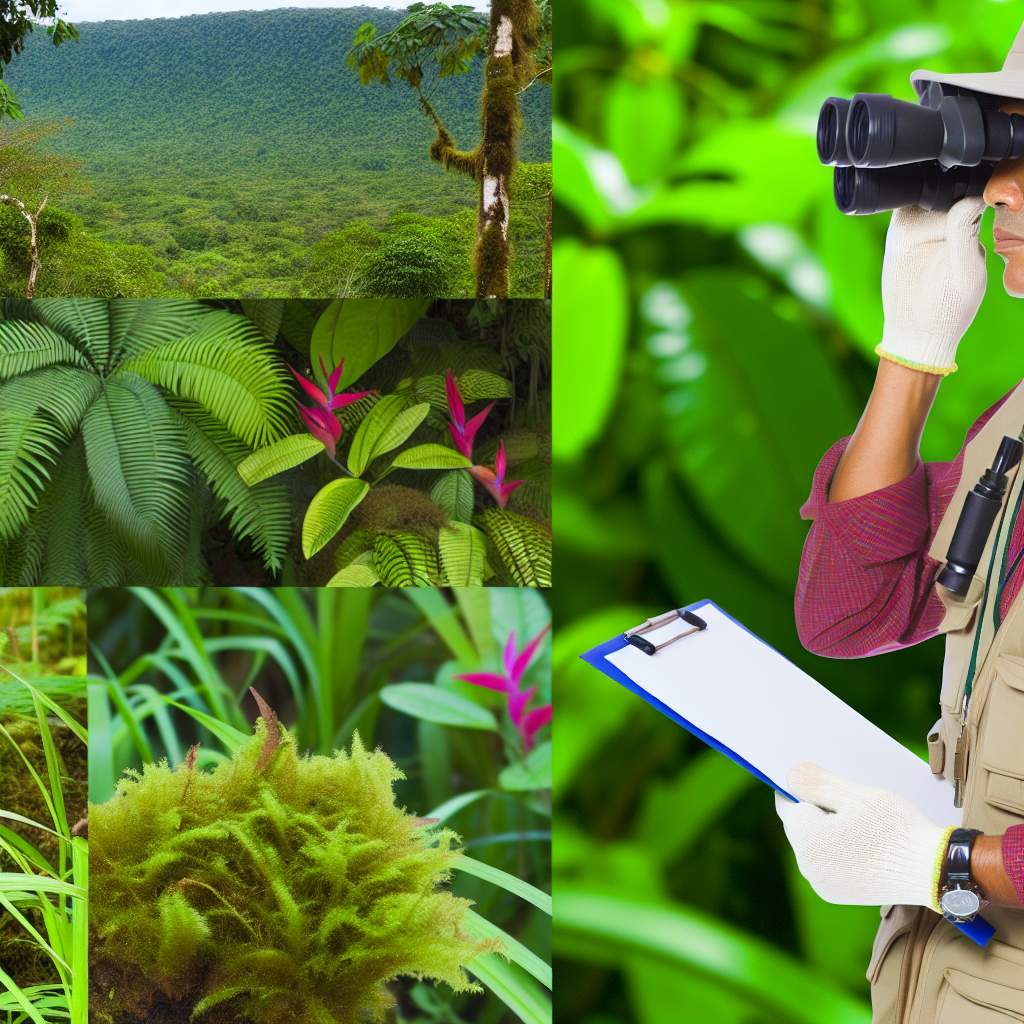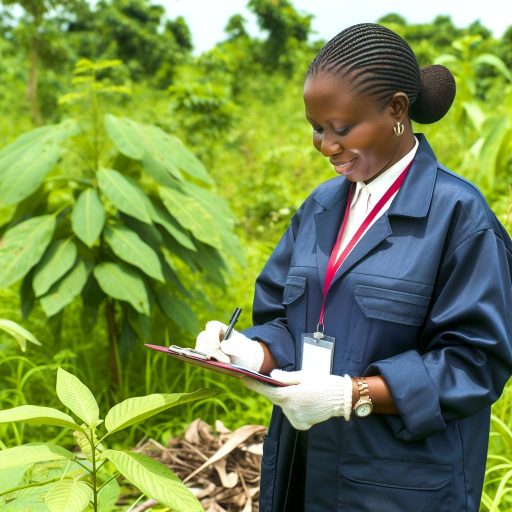Introduction to Environmental Impact Assessment in Nigeria
Environmental Impact Assessment (EIA) is crucial in Nigeria today.
This discipline helps evaluate potential environmental effects of proposed projects.
In Nigeria, rapid development poses significant threats to ecosystems.
For this reason, EIAs aim to identify and mitigate these effects early.
Purpose of Environmental Impact Assessment
The primary purpose of an EIA is to ensure environmental protection.
It evaluates how projects might affect air, water, and land resources.
Moreover, it assesses impacts on biodiversity and local communities.
Ultimately, it guides decision-makers to promote sustainable development.
Legal Framework for EIA in Nigeria
Nigeria’s legal framework for EIA is guided by the Environmental Impact Assessment Act of 1992.
This act mandates EIAs for certain projects to safeguard the environment.
It also establishes procedures for public participation in the assessment process.
Furthermore, violations of these regulations can result in legal consequences.
Procedure of Conducting Environmental Impact Assessment
The EIA process typically begins with a screening phase.
This phase determines whether a project requires a full assessment.
Next, scoping identifies key environmental issues to be addressed.
Following this, the proponent prepares an Environmental Impact Statement (EIS).
The EIS details potential impacts and proposed mitigation measures.
Lastly, stakeholders review the EIS, and decisions are made accordingly.
Benefits of Environmental Impact Assessment
EIAs provide numerous benefits to Nigeria’s ecosystems and communities.
They promote informed decision-making for sustainable development.
Additionally, EIAs facilitate the integration of environmental considerations into projects.
They also enhance public participation, empowering local communities.
In the long run, EIAs help preserve biodiversity and natural resources.
Historical Background of EIA in Nigeria’s Environmental Policy
Early Developments
Environmental Impact Assessment (EIA) emerged as a critical tool in Nigeria during the late 1980s.
This period marked heightened awareness of environmental degradation in the country.
Initially, the focus was on oil exploration impacts, particularly in the Niger Delta region.
Consequently, the government recognized the need for systematic environmental reviews.
Establishment of EIA Regulations
The Federal Environmental Protection Agency (FEPA) established EIA regulations in 1992.
These regulations required that all major projects undergo environmental assessment.
The goal was to mitigate adverse effects on ecosystems and human health.
Furthermore, stakeholders needed to engage with local communities during the process.
Integration into National Policies
Over time, Nigeria integrated EIA into broader environmental policies.
For instance, the National Policy on the Environment highlighted the importance of EIA.
This integration allowed for a comprehensive approach to ecological preservation.
Additionally, it provided a framework for sustainable development in various sectors.
Current Practices and Challenges
Today, EIA is an essential part of project planning in Nigeria.
It involves assessing social, economic, and environmental impacts before approval.
However, challenges remain, including inadequate technical expertise and funding.
Moreover, public participation in the EIA process is often limited.
Addressing these challenges is crucial for improving EIA effectiveness in Nigeria.
Transform Your Career with Expert Guidance
Get personalized mentorship consulting that’s tailored to your unique path. Our expert advice is actionable and exclusive.
Get StartedKey Legislation Governing Environmental Impact Assessment in Nigeria
Overview of Environmental Impact Assessment Act
The Environmental Impact Assessment Act was established in 1992.
This legislation mandates that potential environmental impacts are considered.
It requires projects to assess their effects on ecosystems.
Additionally, the Act promotes sustainable development practices.
National Environmental (Sanitation and Wastes Control) Regulations
This regulation was updated in 2009 to enhance waste management practices.
It provides a framework for effective waste disposal methods.
Moreover, it underscores the importance of public participation.
Citizens can contribute feedback during the assessment process.
Sector-Specific Guidelines
Different sectors have tailored guidelines for Environmental Impact Assessments.
For instance, the oil and gas sector has comprehensive guidelines.
These guidelines focus on mitigating environmental damage.
They also ensure that communities understand their risks.
Role of the Federal Ministry of Environment
The Federal Ministry of Environment oversees the implementation of these laws.
This ministry evaluates environmental assessments submitted by developers.
Furthermore, it enforces compliance with environmental regulations.
Through this role, the ministry protects Nigeria’s ecosystems.
Public Participation and Consultation
Public participation is a key aspect of the Environmental Impact Assessment process.
Stakeholders are encouraged to share their views on proposed projects.
This helps identify potential environmental concerns early on.
As a result, project developers must address these concerns effectively.
Challenges in Implementation
Despite the laws, challenges persist in enforcement.
Limited resources often hinder effective implementation.
Moreover, some projects bypass assessments due to inadequate oversight.
Raising awareness about these challenges is critical for improvement.
You Might Also Like: Challenges in Implementing Environmental Policies in Nigeria
The Process of Conducting an Environmental Impact Assessment
Preparation Phase
The first step involves identifying the project scope.
Stakeholders must define the geographical area impacted.
Next, they assess the potential environmental factors.
This includes flora, fauna, and water sources.
Gathering existing environmental data is crucial.
Public Consultation
Engaging the community follows the preparation phase.
Organizing public meetings fosters transparency.
Feedback from local residents informs the assessment.
People’s knowledge of the area is invaluable.
Impact Analysis
Evaluating how the project affects the environment is essential.
Impact analysis considers various scenarios and outcomes.
Quantitative and qualitative data guide this phase.
Mitigation strategies are developed to minimize harm.
Reporting and Review
Creating a detailed report summarizes findings and recommendations.
This report outlines potential environmental impacts.
Stakeholders submit the report for review by authorities.
Regulatory bodies assess compliance with laws.
Decision Making
Authorities make informed decisions based on the report.
They can approve, deny, or request modifications.
Public comments may influence the final decision.
Monitoring and Follow-Up
After approval, monitoring begins to track environmental impact.
Stakeholders must ensure compliance with mitigation measures.
Regular updates aid in adapting strategies as needed.
This ongoing assessment supports Nigeria’s ecosystems.
Delve into the Subject: Environmental Safety Certifications in Nigeria
Case Studies of Successful EIA Implementation in Nigeria
Oil and Gas Sector: The Bonga Project
The Bonga Project highlights effective EIA practices in Nigeria.
Shell Nigeria developed a comprehensive environmental plan.
This plan addressed potential impacts on marine ecosystems.
Community engagements were essential throughout the EIA process.
Consequently, local feedback shaped project execution and monitoring.
Agriculture: The International Fund for Agricultural Development Initiative
The International Fund for Agricultural Development (IFAD) initiated sustainable farming projects.
This initiative includes rigorous EIA protocols to mitigate ecological damage.
Farmers received training on environmentally-friendly practices.
Thus, both biodiversity and agricultural productivity improved in affected regions.
Mining Sector: The Dangote Cement Project
Dangote Cement’s operations exemplified responsible EIA practices.
The company ensured compliance with international environmental standards.
They conducted thorough assessments before mining activities commenced.
Local communities benefited from job creation and infrastructure development.
Moreover, ongoing monitoring helped mitigate adverse environmental impacts.
Infrastructure Development: Lagos State Urban Renewal Project
This urban renewal project focused on sustainable development in Lagos.
The government performed extensive EIAs before construction began.
Public consultations allowed residents to provide input on potential impacts.
Consequently, the project integrated green spaces within urban environments.
This approach not only preserved ecology but also enhanced city aesthetics.
Renewable Energy: The Solar Power Initiative
The Solar Power Initiative aimed to reduce energy dependence in Nigeria.
This initiative mandated comprehensive EIA processes for all installations.
Stakeholders assessed land use and protected species during evaluations.
As a result, the initiative promoted clean energy without harming ecosystems.
This project reflects Nigeria’s commitment to sustainable development efforts.
Learn More: Nigerian Fisheries: Challenges and Solutions

Challenges and Limitations of EIA in Protecting Nigeria’s Ecosystems
Insufficient Awareness and Training
Many stakeholders lack awareness of the importance of Environmental Impact Assessments (EIA).
This lack of awareness leads to inadequate participation in the EIA process.
Moreover, insufficient training hinders the ability to conduct thorough assessments.
Consequently, this results in overlooked ecological impacts during project planning.
Regulatory Weaknesses
Nigeria’s regulatory framework often lacks strict enforcement of EIA guidelines.
Regulators sometimes prioritize economic growth over environmental protection.
This conflict can compromise the integrity of the EIA process.
Furthermore, limited resources for enforcement make it hard to assess compliance.
Corruption and Political Interference
Corruption can undermine the effectiveness of Environmental Impact Assessments.
Political interference may lead to biased assessments favoring developers.
This situation can result in approvals for projects that harm ecosystems.
Thus, transparency in the EIA process is crucial for genuine environmental protection.
Insufficient Data and Research
Limited access to reliable ecological data poses a significant challenge.
Without adequate research, assessments may miss critical environmental factors.
This gap can lead to poor decision-making regarding project implementations.
Additionally, insufficient baseline studies hinder the ability to monitor impacts effectively.
Lack of Public Participation
Local communities often feel excluded from the EIA process.
This lack of involvement can lead to projects that do not reflect local needs.
Furthermore, disengagement prevents traditional knowledge from informing assessments.
Public participation is vital for identifying potential environmental concerns.
Shortcomings in Review Processes
The review process of EIAs may lack rigor and thoroughness.
This inadequacy can lead to poorly evaluated projects and overlooked risks.
Moreover, time constraints often pressure assessors to rush reviews.
As a result, comprehensive analyses may be compromised.
Discover More: How to Become an Environmental Management Technologist
The Role of Stakeholders in the EIA Process
Government Agencies
Government agencies play a crucial role in the Environmental Impact Assessment process.
They establish regulations that guide the EIA process across Nigeria.
Agencies such as the Federal Ministry of Environment oversee compliance with environmental laws.
They also review and approve EIA reports submitted by project developers.
Effective collaboration between agencies ensures robust environmental protection.
Non-Governmental Organizations (NGOs)
NGOs contribute significantly to the EIA process through advocacy and awareness.
These organizations often conduct independent studies on environmental impacts.
Their findings can influence public opinion and governmental policies.
Additionally, NGOs provide a platform for community voices in the EIA process.
They help ensure that vulnerable ecosystems are prioritized in decision-making.
Local Communities
Local communities are vital stakeholders in the EIA process.
They possess traditional knowledge of the ecosystems they inhabit.
Involvement in the EIA process empowers these communities.
It allows them to express concerns about potential project impacts.
Moreover, their local input can enhance the quality and relevance of EIA reports.
Collaboration Among Stakeholders
Effective collaboration among stakeholders enhances the EIA process.
Each stakeholder brings unique perspectives and expertise.
Through dialogue and partnership, stakeholders can address potential conflicts.
This collective effort promotes sustainable project implementation.
Ultimately, collaboration leads to better environmental protection in Nigeria.
Future Directions for Strengthening EIA Practices in Nigeria
Enhancing Regulatory Frameworks
Strengthening regulatory frameworks can significantly improve EIA practices in Nigeria.
Updated laws will enable better enforcement of environmental standards.
Additionally, integrating community participation in the regulatory process fosters transparency.
Building Capacity and Competence
Investing in training programs enhances the skills of EIA professionals.
Workshops can help stakeholders understand the significance of EIAs.
Furthermore, partnerships with international organizations can transfer knowledge and best practices.
Technology Integration
Adopting advanced technologies will streamline EIA processes.
Geographic Information Systems (GIS) can provide valuable spatial data for assessments.
Moreover, remote sensing can monitor environmental changes effectively.
Strengthening Public Engagement
Encouraging public participation is essential for successful EIA outcomes.
Public consultations should be more accessible and informative.
Engaging local communities builds trust and improves project acceptability.
Promoting Interagency Collaboration
Collaboration among governmental agencies is crucial for effective EIA implementation.
Regular meetings can facilitate information sharing and joint decision-making.
Additionally, aligning departmental goals will promote a unified approach to environmental protection.
Monitoring and Evaluation
Establishing robust monitoring systems ensures compliance with EIA recommendations.
Regular evaluations can identify areas for improvement in the EIA process.
Furthermore, feedback mechanisms foster accountability among stakeholders.
Additional Resources
Rethinking Environmental Law Enforcement in Nigeria
Environmental Impact: Concept, Consequences, Measurement – PMC




